
Global exports of liquefied natural gas in August totaled approximately 31.2 million tons on board 479 vessels, lower than August 2019’s pace of 32.5 million tons on 483 vessels, with a drop in loadings from the US & Pacific regions. Approximately 30.8 million tons arrived on 474 vessels at import terminals in August, compared to 32.9 million tons in August 2019.
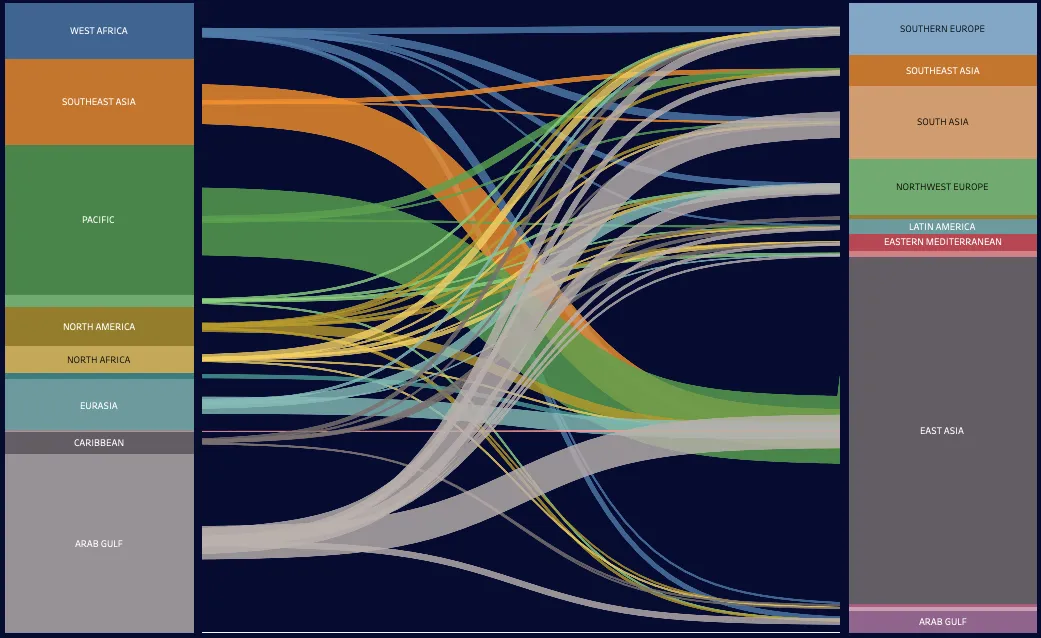
The number of floating LNG cargoes has remained steady for most of the month, with the highest number of vessels occurring on August 13 at 23, while the trend of LNG cargoes leaving floating storage has remained stable.
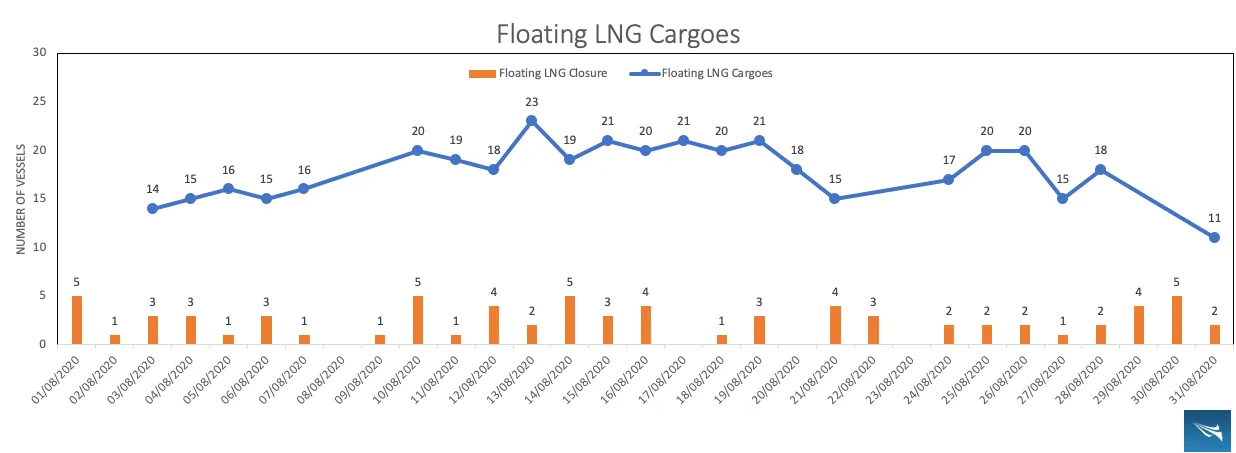
East Asia took in 17.0 million tons of LNG in August 2020, lower than the 17.6 million tons taken in during August 2019. For South Asia, the 3.5 million tons imported in August represented a 6 percent increase from year-ago levels.

Chinese LNG imports remained strong with 6.2 million tons received on 92 vessels in August 2020, higher than August 2019 imports of 5.5 million tons, while Japanese imports edged lower from 7.0 million tons in August 2019 to 6.8 million tons in August 2020.
South Korean LNG imports remained weak on a YoY basis at 2.3 million tons in August 2020 versus 3.4 million tons a year ago, while India & Bangladesh imports increased in August 2020 along with stable imports to Pakistan.
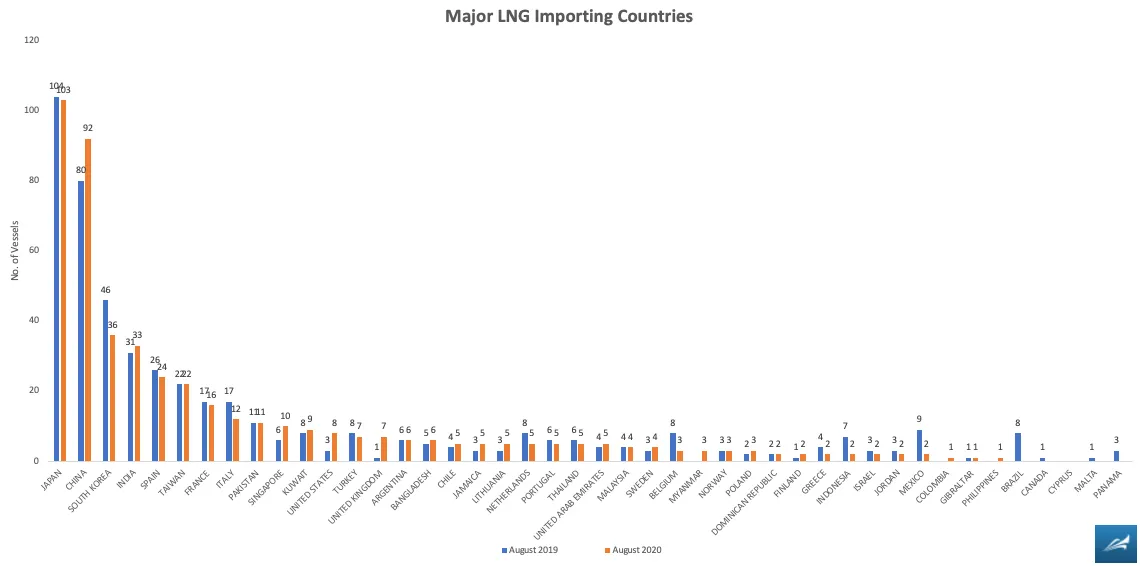
Mexico and Brazil imports fell in August 2020, with only two vessels arriving in Mexico while no cargoes discharged in Brazil. Some 17 vessels were imported by these two countries in August 2019.
The Asia-Pacific region exported about 7.9 million tons of LNG in August, approximately 0.1 million tons less than in August 2019 and 1.0 million tons more than in July 2020, primarily due to higher loadings from Malaysia despite reduced exports from the Gorgon LNG and Prelude FLNG facilities. Exports from the Arab Gulf came in at 8.4 million tons, lower than the August 2019 total of 8.6 million tons.

North America exports in August continued to be subdued, with an 18% drop on a YoY basis to 2.3 million tons, approximately 0.4 million tons higher than in the month prior, primarily due to US cargo cancellations and Hurricane Laura forcing shut-ins at the Sabine Pass & Sempra LNG terminals. Northern Russia loaded 1.5 million tons in August, on par with July 2020 and 0.1 million tons lower than the volume loaded in August 2019.
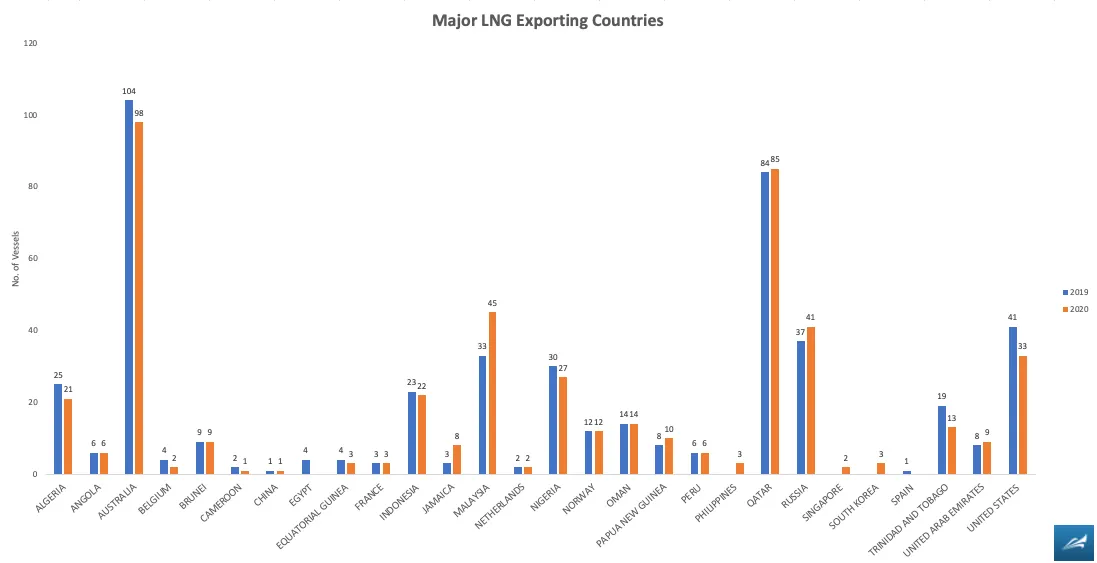
LNG exports were lower last month from Australia & United States, while exports from the Malaysia spiked with stable loadings from Arab Gulf & West Africa.

Prices remained stable during most of August due to bullish European gas hub prices along with reduced loadings from US & Australia. However, in the last ten days of the month, prices were volatile, primarily due to an expected rebound in US exports which were curtailed due to the tropical storm and hurricane, while demand remained normal from East Asia.
The European reloading arbitrage window for NE Asia was open briefly in the middle of the month, while it remained open for most of August for the Mediterranean and South Asia. Overall European reloads fell due to bullish European prices, with eight vessels leaving reload terminals while only four originated from European terminals.
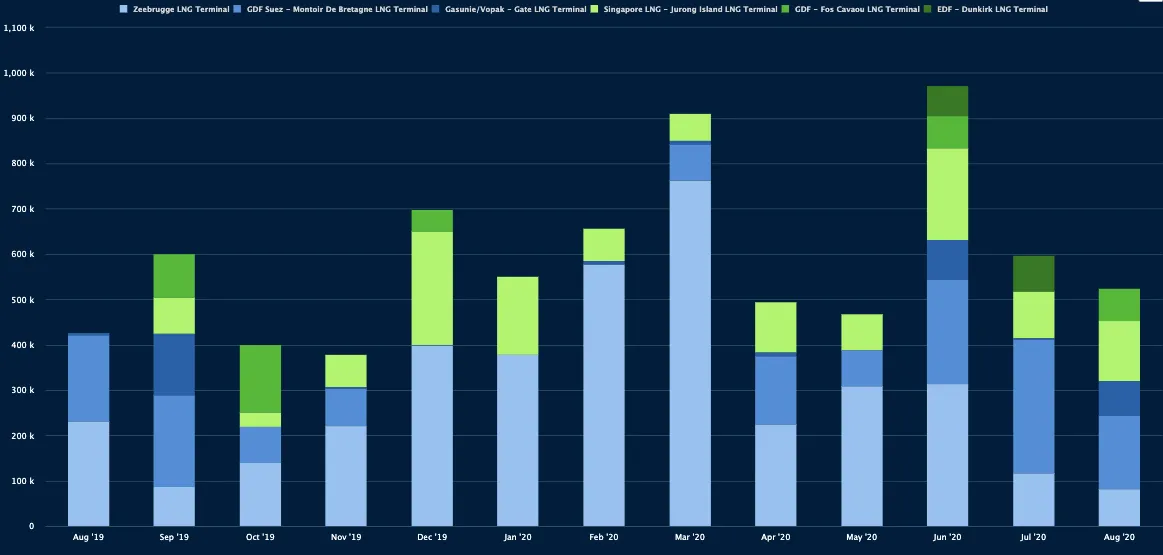
During August 2020, 19 vessels left from the Yamal LNG project in Northern Russia, with five vessels arriving at different terminals in France and one each in China, South Korea and Taiwan via the Northern Sea route. Nine vessels are still on the water, with five heading for East Asia via the Northern Sea route, while the rest remain bound for Europe.

LNG export terminal utilization based upon ClipperData shipping tracking is listed below:
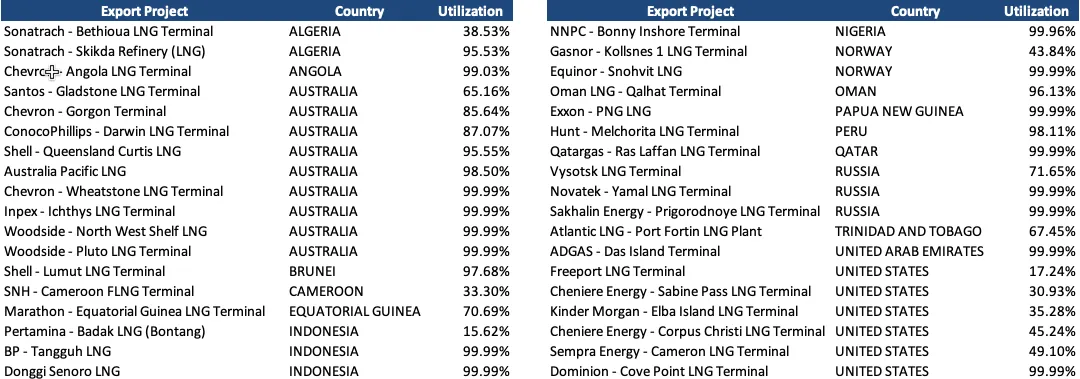
Below is countrywide LNG import terminal utilization:

To learn more about the data behind this article and what ClipperData has to offer, visit https://clipperdata.com/.







Sign up to receive our stories in your inbox.
Data is changing the speed of business. Investors, Corporations, and Governments are buying new, differentiated data to gain visibility make better decisions. Don't fall behind. Let us help.













Sign up to receive our stories in your inbox.
Data is changing the speed of business. Investors, Corporations, and Governments are buying new, differentiated data to gain visibility make better decisions. Don't fall behind. Let us help.





